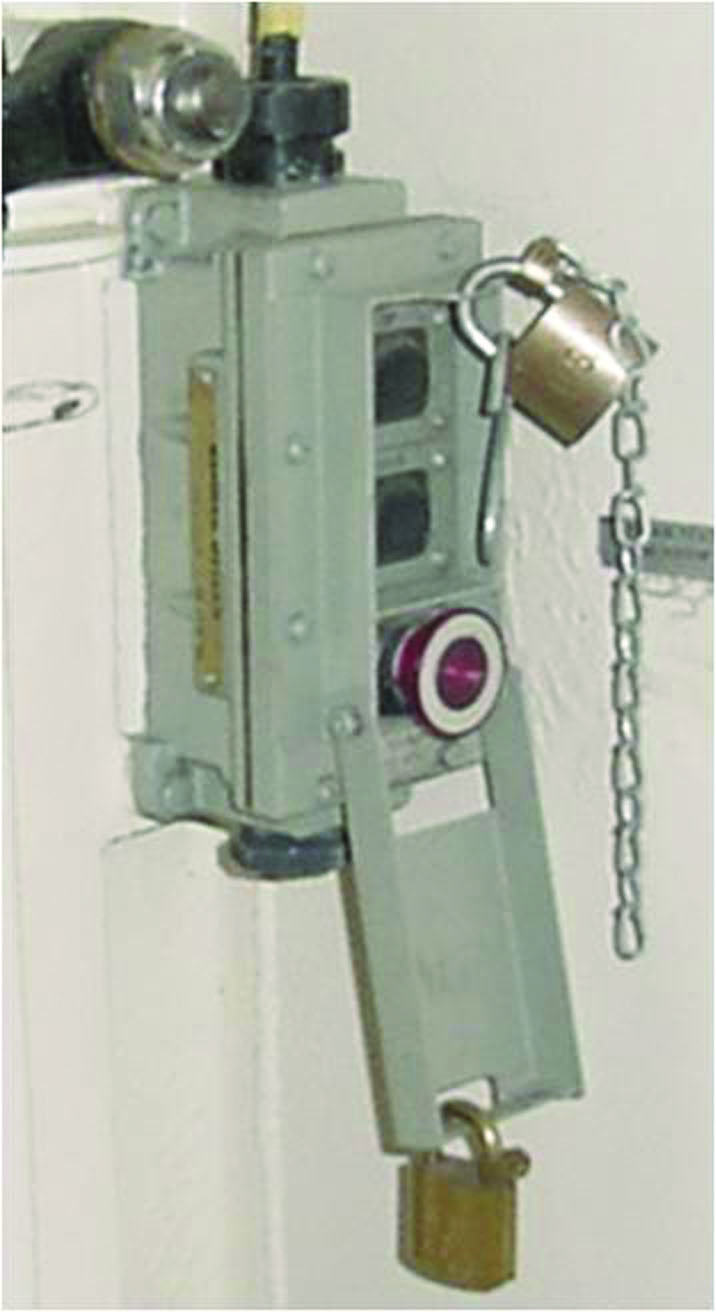Spot The Safety Violation: Proper Lockout Requires More than Locks
Are these locks properly locking out this panel box to protect workers’

Electrical equipment poses serious safety hazards to workers who have to repair or maintain the equipment. That’s why equipment should be powered down and locked out before workers do such work on it. The purpose of the locks is to prevent another worker from powering or starting the equipment.
But adequate lockout requires more than just attaching a lock’or two’to the equipment. In this picture from the US Naval Safety Center, there are two locks attached to this panel box. But the locks don’t appear to be preventing anyone from accessing the buttons in the box. In fact, the locks are just hanging off the box like decorations’not safety measures. And if the locks aren’t being used to lockout the box, they should be properly stored’not hung off of the equipment.
Why is proper lockout so important’ Because without it, workers can get seriously injured and even killed if machinery is powered or starts up while they’re fixing or cleaning it.
Example: A worker was repairing slats underneath a conveyor belt. But he didn’t lock out the belt. A co-worker pressed the start button while he was still working on the belt and it began to move, pulling the worker’s hand into a sprocket. He sustained a broken finger and required a significant number of stitches. The manufacturer pleaded guilty to an OHS violation and was fined $40,000 [Cargill Limited-Cargill Limite, Ontario Govt. News Release, April 17, 2014].
8 KEYS TO PROPER LOCKOUT
Here are eight key things you need to know to ensure that you comply with the lockout requirements in your jurisdiction’s OHS laws:
- Which machinery and equipment is subject to the lockout requirements
- When the OHS laws require such machinery to be locked out, such as when a guard is removed from machinery or equipment or when workers are troubleshooting the equipment (use this lockout hazard identification and risk assessment worksheet)
- Any exceptions to the lockout requirements, such as when the machinery must be running so workers can figure out what the problem is
- What group lockout is and when it’s appropriate
- The requirements for the locks used in lockout procedures, including identifying which locks have been assigned to which workers
- The requirements for lockout tags, if applicable
- Why you should have a lockout policy and procedures and what they should cover, such as the procedures for when a supervisor must remove a worker’s lock and what you should do with locks when they’re not in use
- What lockout training for workers should include.